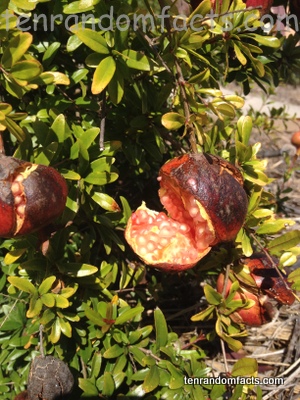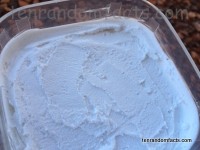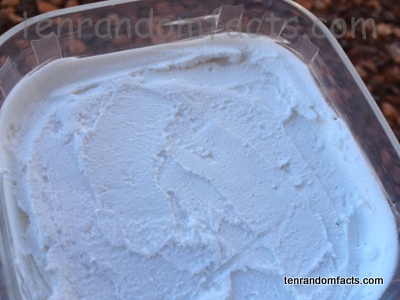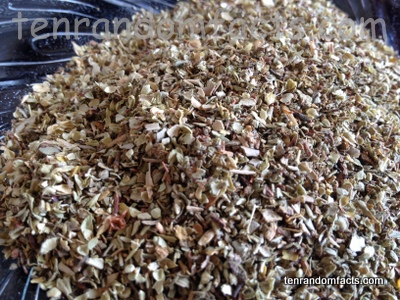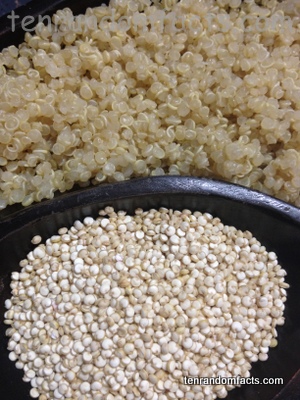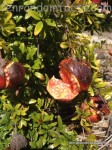
“Your cheeks are like halves of a pomegranate behind your veil.” Song of Solomon 4:3
- Pomegranates are fruit that grow on small trees or shrubs that reach approximately 5 to 8 metres (16 to 26 feet) in height, and are native to the Middle East’s Iran.
- Pomegranates have the scientific name Punica granatum, that are from the family Lythraceae, the family of flowering herbs, although they were originally classified as part of the Punicaceae family.
- Pomegranates are large, red coloured, roughly spherical berries with diameters of around 5 to 12 centimetres (1.9 to 4.7 inches).
- Pomegranates contain white membranes and edible red arils (commonly called seeds), that contain a sweet to sour juicy flesh and a seed; with approximately 200 to 1400 seeds in a single berry.
- ‘Pomegranate’ comes from the words ‘pōmum grānātum’ in Medieval Latin, that mean ‘apple with many seeds’.
- Pomegranate arils are easily accessed by scoring the fruit with a knife, breaking it open, and banging the fruit or placing the fruit in water, where the arils will separate from the membranes.
- Pomegranates can be eaten raw, and are used in Middle Eastern cuisine as well as Greek dishes, and are made into beverages including alcohol or juice, or used as a flavouring.
- Pomegranates are sometimes recognised as a symbol of fertility, prosperity and ambition, or in Greek mythology, death.
- Pomegranates have been used in traditional medicine to treat digestive problems, as well as internal parasites.
- Pomegranates are very high in vitamin K, vitamin C and fibre, and are high in folate, potassium, copper and manganese.
Bibliography:
The Fruit, 2008, Pomegranates 101, http://www.pomegranates.tv/information.html
Pomegranate, 2014, Wikipedia, http://en.wikipedia.org/wiki/Pomegranate




